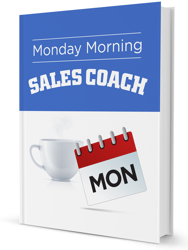The Qualified Prospect
Most salespeople can’t tell the difference between a suspect and a prospect!
A suspect is a company or person who would seem to have the right demographics, psychographics, etc. to be a prospect, but has yet to be qualified. Some suspects do not become prospects.
A prospect is a company or person who has been qualified and that has these three qualities:
- Pain: They have a problem that your product or service can resolve and are motivated to do something to improve their situation. If they are buying your product or service from a competitor and there is some level of dissatisfaction, they have pain. If they are satisfied, they are not a prospect. (No pain, no change.)
- Resources: The have adequate resources (money, manpower, skills, etc.) to buy and implement your product or service.
- Authority: They have the authority to make the decision to buy your product or service.
The only way your can effectively qualify a prospect is to ask questions. There are no shortcuts, yet salespeople take them anyway. Qualifying a prospect can be “risky!” After all, asking a lot of questions could reveal that the prospect is not qualified. You might find out that their pain is not significant enough for them to take action, that their current supplier is actually doing a fairly good job, or that they night not have or be willing to commit any financial resources to purchase from you. If the prospect is actually not qualified, then it’s back to the task of more prospecting.
So salespeople choose not to ask the hard questions, making assumptions instead. Every time your assumption is wrong, you diminish your chances of making the sale.
Here are a few of the most common assumptions:
- Everybody needs what I sell. (Yes, and everybody needs a refrigerator, but if yours works okay, are you likely to buy another one?)
- Anybody who buys from a competitor is a good prospect. (Try selling somebody who is really happy with your competitor.)
- When they hear my sales pitch, that’ll get their attention! (Doubtful! They’ve heard it all before.)
- She said she was the decision maker – it must be so. (How many times have you bought that line 100% and found out it was a lie?)
- The problem must be serious; I’m sure they’ve got to do something. (Unless they told you that it’s serious, this is the worst assumption you can make. It’s easier and less threatening for the prospect to maintain the status quo. That’s why 25% of the proposals salespeople present are never acted upon.)
The rest of Part IV is about qualifying. Today it’s a far more valuable skill than making a compelling presentation. After all, if a prospect is not qualified, there will be no sale. And if there is not going to be a sale, it’s best to find out earlier than later.
Self-Study Assignment: How effective are you at qualifying your prospects? Think about some of the deals you’re currently working on. Do you have a really good understanding of their pain, resources, and authority? If not, make a list of the areas where you need to do a better job and try to be more thorough on your next call.


